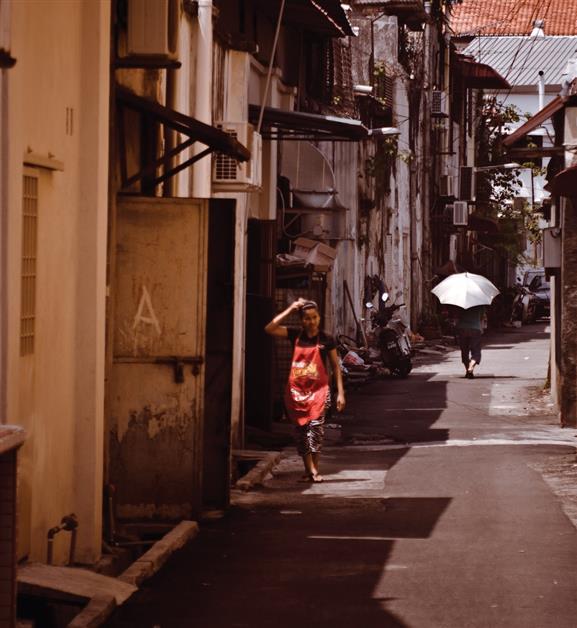It was where you once went either to buy or gawk at Chinese coffins, or to buy exercise books and search for items on your latest school curriculum list. It linked Prangin Road, where you got off the Lim Seng Seng bus, to Pitt Street, where you visited money changers. Carnarvon Street today is still a thoroughfare where it is worth your while to stray for a bit.
Once when I mentioned Carnarvon Street to a now successful business owner, he looked at me with wonder and asked, “Why Carnarvon Street? There is nothing there.” Then he sighed and added, “When I was a child that road used to scare the shit out of me. There were funeral shops, dead people and dodgy people hanging out on the corners. In fact, I was beaten up by a gang of older kids when I was 10.”
But that was a long time ago. What does Carnarvon Street look like now? The number of funeral shops has dramatically decreased, but they are still here, and there are no dodgy people hanging out at street corners at night. Carnarvon Street has changed, together with many parts of Penang, into a much safer, more prosperous place. However, the street lacks the charm of Love Lane, the boutique chic of Armenian Street or the chaotic bustle of Gurney Drive. In fact, many taxi drivers in town don’t seem know where the road is.
Hardly glamorous, but rather dusty and concrete, there are no boutique hotels, and the shophouses have not been renovated for decades. The only tourists that pass by are the ones who lose their way. It seems that the street has been spared from the boutique chic craze and people move here from other places looking for cheaper rent.
But don’t be fooled by its sleepy appearance. There are plenty of interesting things going on, free from rampant tourism. This is George Town with no make- up. For example, it is home to one of the most famous restaurants in town as well as a well known duck rice place, a busy morning market, bookshops, art material shops, graphic design offices and funeral shops where you can buy a paper Mercedes or Tiger beer for the dead.
One of the highlights of Carnarvon Street is Ng, the stone carver and Chinese calligraphy artist—people come from as far as Singapore and Hong Kong to see him. Through long years of dedicated craftsmanship, Ng has become an icon of the living heritage and he is sometimes called “Heritage Uncle”. Most people come to see him out of nostalgia, because his trade is rare. I asked if there were many stone carvers in Penang before, Ng smiled and said that it was a dying trade in the 1960s and long before that. One of the reasons why he became a stone carver after returning from his art studies in Hong Kong was purely practical – at that time there wasn’t a single one in Penang and market demand for his skills was high.




